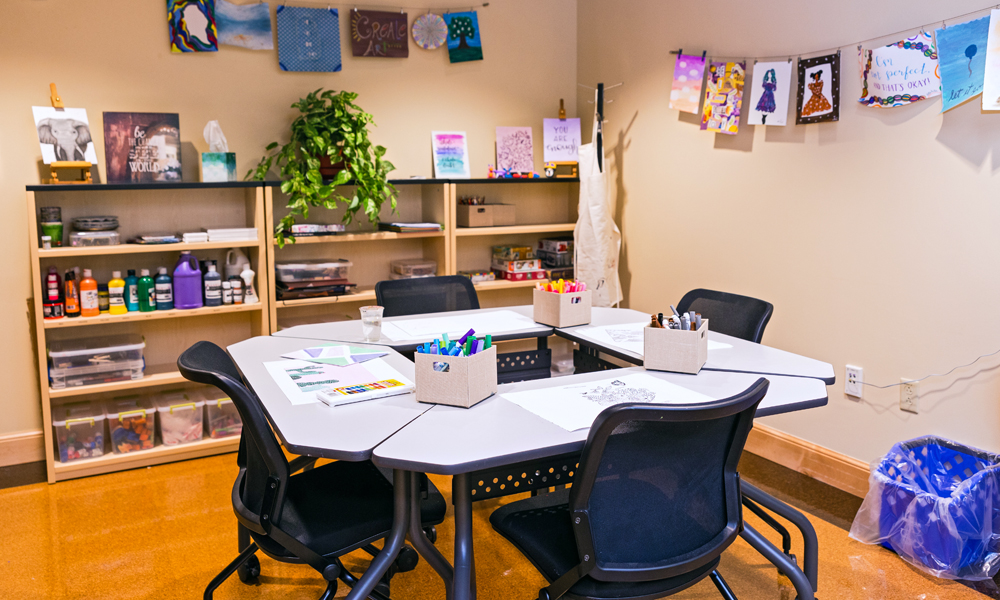JMU advancing well-being efforts as a Health Promoting Campus
Featured Stories
SUMMARY: JMU’s inclusion in the U.S. Health Promoting Campuses Network better enables university leadership to identify existing initiatives around campus that contribute to a healthy environment for students, faculty and staff. The network is guided by the international Okanagan Charter and calls on post-secondary schools to embed health into all aspects of campus culture, and to lead health promotion action and collaboration locally and globally.
As a recent addition to the U.S. Health Promoting Campuses Network, JMU is committed to the health and well-being of people, place and planet.
Health Promoting Campuses Week starts April 21 and recognizes campuses around the country that have adopted the Okanagan Charter: An International Charter for Health Promoting Universities and Colleges to create collective, systems-based impact practices that promote well-being in higher education. According to the national event’s organizers, “By prioritizing health, equity and sustainability, we are shaping a future where students, faculty and staff can thrive holistically.”
JMU’s inclusion in the Health Promoting Campuses network better enables university leadership to identify programs that contribute to a healthy environment, said Dr. Kristina Blyer (’12M, ’16Ph.D.), associate vice president for health and well-being in Student Affairs and co-chairperson of the President’s Council on Health and Well-Being.
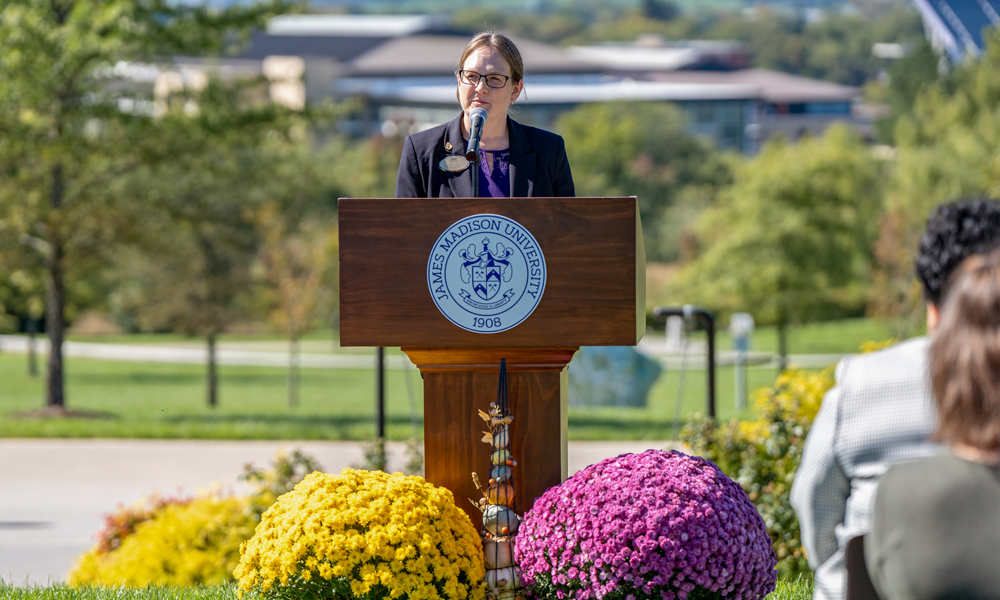
Even before becoming a Health Promoting Campus, JMU was highlighting health and well-being through its many programs and initiatives. “Being part of the network acknowledges the amazing work we already do,” Blyer said.
|
“One of the things I really appreciate about the Okanagan Charter is it recognizes that colleges and universities have a lot of resources and a lot of experts that many other communities do not." — Dr. Kristina Blyer (’12M, ’16Ph.D.), co-chair of JMU's President's Council on Health and Well-Being |
The network, which JMU joined in the fall of 2022, is guided by the Okanagan Charter.
JMU was the first Virginia university to become a Health Promoting Campus, Blyer said. “It’s significant that we were the first ones to be able to adopt [the charter], and that our leadership here said, ‘Yes, let’s do this.’ I think that was a really huge part of it.”
Madison’s adoption of the charter in the fall of 2024 involved every university division and developed directly from the working group efforts of the President’s Council, said co-chairperson, Dean of Libraries and English professor Dr. Bethany Nowviskie.
“The President’s Council and our campus commitments exemplify how interdisciplinary and wide-ranging the work of health promotion can be at a university like JMU,” Nowviskie shared. “We have learned that this work must be broadly inclusive in order to succeed.”
Blyer said the network affiliation allows administrators greater insight into how to continue and expand upon existing efforts.
|
”The President’s Council and our campus commitments exemplify how interdisciplinary and wide-ranging the work of health promotion can be at a university like JMU. We have learned that this work must be broadly inclusive in order to succeed..” — Dr. Bethany Nowviskie, co-chair of JMU's President's Council on Health and Well-Being |
“It means that we’re going to really work to embed health and well-being into everything that we do, and that’s across campus — looking at our policies, our systems … down to what we offer to individuals,” Blyer said. “It’s really looking at everything, and [asking] how do we make it well for all of those who are in our community?”
Student Affairs has been creating slides to display on screens around campus that illustrate JMU’s commitment to being a Health Promoting Campus, said Angela Ritchie (’88), associate director of communications and marketing.
Since adopting the Okanagan Charter, this will be the first year Madison is “fully immersed” in the Health Promoting Campus effort. Ritchie hopes that participating in U.S. Health Promoting Campus Week will allow for greater awareness about this important work.
“Health and well-being impacts what we do every day,” Ritchie said. “It’s important to be mindful of this, so we want to do our part. I think it’s easy to lose touch with that as you’re focusing on all the responsibilities in your life. If we allow time for each of the six dimensions in the well-being model, we can see a positive impact on our lives and the lives of others.”
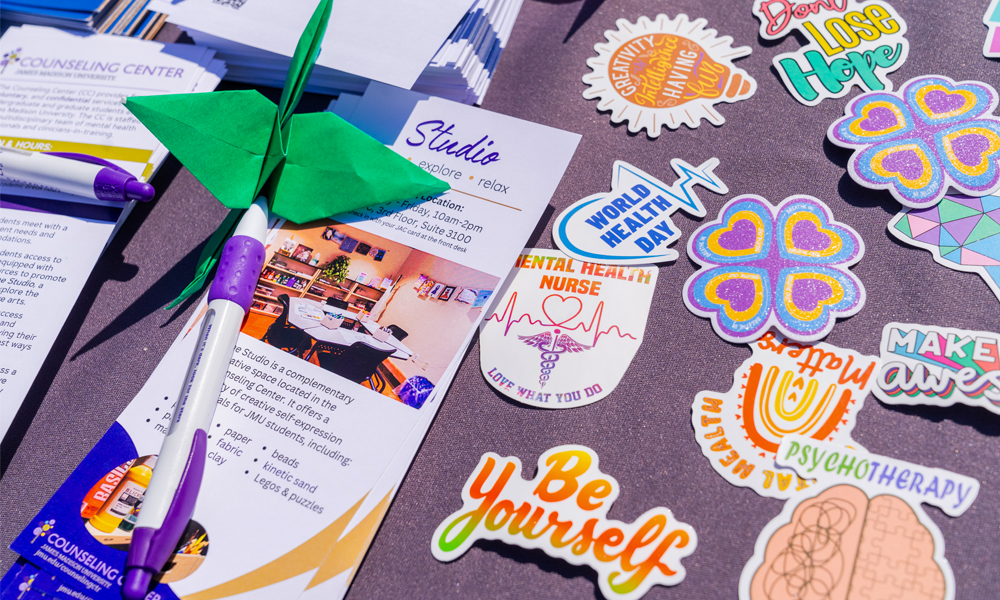
One such effort underway at JMU involves making the withdrawal process easier for students who need a break from school.
“How do we make that as barrier-free, as stress-free as possible?” Blyer said. “And then also on the other side of that, how do we set them up for success to take care of whatever the situation is and then help them to be able to easily re-enroll back into the university. There’s a group on campus that’s really taking a deep dive into that entire process. … We already had a great withdrawal process. We already have support for students in that area, but how can we look across campus to make that even better?”
Other ways JMU promotes well-being include:
- Focusing on faculty and staff well-being, starting with a survey in the spring of 2024 led by Tara Torkelson (’18M}, coordinator of employee well-being in Human Resources, and Gilpatrick Hornsby, associate vice provost of faculty success, from the Center for Faculty Innovation.
- Continuing its work as a JED University since 2022, offering support to students alongside the nonprofit organization The JED Foundation, “which protects emotional health and prevents suicide for our nation’s teens and young adults, giving them the skills and support they need to thrive today … and tomorrow.”
- Facilitating the Balanced Dukes effort, an employee wellness and well-being program that aims to offer “resources, initiatives, and campaigns designed to support and enhance the overall well-being of our faculty and staff.”
“I think that’s the first thing is just acknowledging what we already do,” Blyer said. “And then, after you do that, starting to look at, OK, where are those things where we might have some gaps, and what are those things that we could do moving forward to help us continue to be a Health Promoting Campus and to even further that work?”
As part of the effort, in November 2024, JMU approved the hire of Sade Bowers (’17), special adviser for the Health Promoting Campus initiative. Bowers has been “meeting with people all over campus, building those relationships again,” Blyer said.
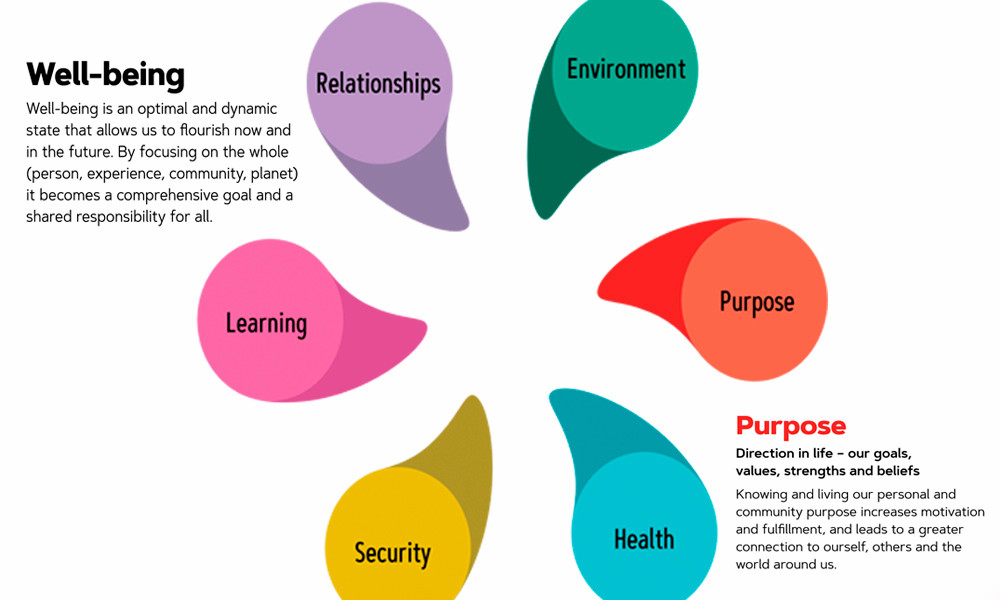
Program organizers are using an image created by Austin Hill (’25), a student graphic designer who works in Student Affairs Communications and Marketing, to help illustrate how personal well-being intersects with all other facets of life through environment, health, relationships, security, purpose and learning. Ritchie said the illustration and its separate elements will also be available to faculty and staff to use in their own work.
“We really want this image to become a recognizable element for people,” Ritchie said. “We’ve got each of the ‘petals’ broken out separately, so, for example, if someone’s doing a presentation that’s focusing on ‘purpose,’ then they can just use the orange one with ‘purpose’ throughout their slides. Here in Student Affairs, as we created our strategic plan, we embedded all of these dimensions and used the elements throughout the document.”
The six dimensions are also integral to “the holistic, research-based campus definition of well-being that we have developed through these efforts,” Nowviskie explained. Council members created a simple definition of well-being as “an optimal and dynamic state that allows us to flourish now and in the future,” as well as a more expansive definition outlined on the website. The six dimensions of the model, Nowviskie said, “stretch across everything we do here.”
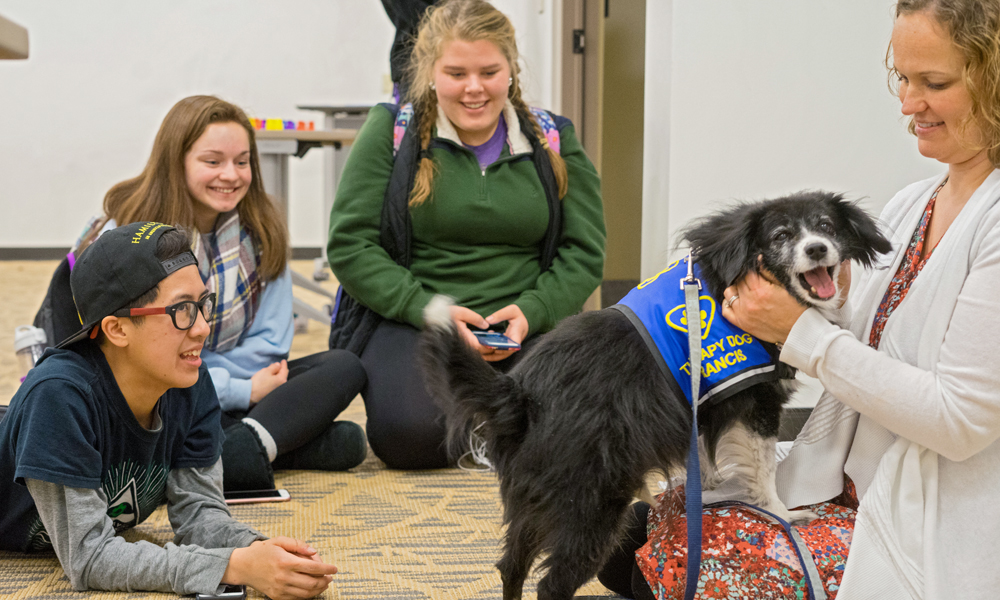
Since joining the network, JMU’s efforts have increased and become more comprehensive, and they’ve had far-reaching effects on existing resources, such as various calming spaces listed at the JMU website:
- The Serenity Center at Warren 419 in The Union
- The Sensory Room in Room 0301 of the Engineering/Geosciences Building
- The Living Room at Warren 420 in The Union
- The Self-Care Spaces at the Counseling Center
- The Edith J. Carrier Arboretum
- UREC Wellness Center and Meditation Studio
- Various semi-secluded study spaces at The Union, Student Success Center and Festival Conference and Student Center
- Spaces available by private call and telehealth visits.
“We need to provide space for people to be more introverted, to have some time to be more mindful,” Blyer said. “So, we have created some spaces on campus. One is our Living Room that’s located in Warren 420. It was designed by our counselors. It uses biophilic design, so there’s green walls and nature elements. There’s a tea station, chairs and blankets. There are floor cushions, so students who may want to sit on the floor can.”
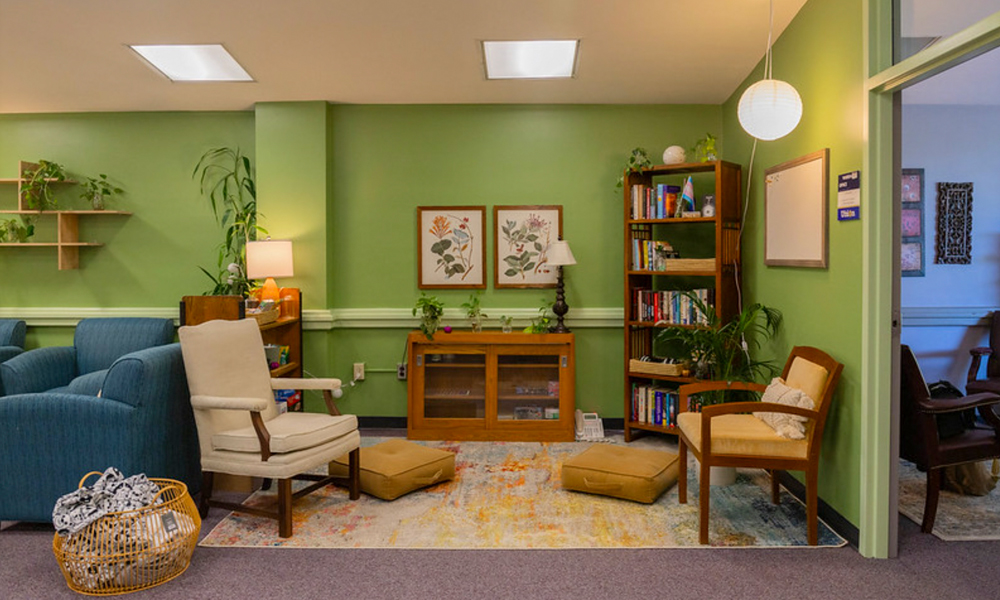
Dr. Jeffrey Tang, interim dean of the College of Integrated Science and Engineering, partnered with Student Affairs to create the Sensory Room in EnGeo with various seating options, fiber-optic lighting that changes colors and noise-canceling headphones. Additionally, the team installed Zenbooths and egg chairs in the Student Success Center and elsewhere around campus. “So just trying to inspire some of this stuff throughout campus, so students can have spaces to find that calm,” Blyer said.
“One of the things I really appreciate about the Okanagan Charter is it recognizes that colleges and universities have a lot of resources and a lot of experts that many other communities do not,” she said. “Part of the work is looking at, how do we create programs and systems and buildings and environmental systems, and all of these things that work here in our campus — in our JMU community — that those models, that information, that research can then be shared in the greater community?
“And I think JMU does that every day,” she continued. “In our research, there’s a lot of programs where students are going out and serving in the communities. We have members of our JMU community who serve on boards and councils for [Rockingham County] and the [City of Harrisonburg], building relationships with those in the county and the city and learning from each other.”
The free webinar, Shaping the Future of Health Promoting Campuses Week, will take place through the University of Colorado Boulder from noon to 1 p.m. EDT on April 25. Registration is required.
